Subjective Information and Survival in a Simulated Biological System
Abstract
:1. Introduction
2. Two-Resource Foraging Model
2.1. Mathematical Model
- The cell is rod-like (an abstraction of many motile bacteria), for which we distinguish “right” and “left” ends relative to its position axis.
- The metabolic substrates, denoted A and B, are present in the environment at determinate concentrations for each environment location . We impose a nonuniform distribution of metabolites A and B, given by local concentration functions and . For simplicity, we consider these concentrations to be static within the timescale of microbial population growth T.
- Each cell at environment location at time t maintains an internal storage of both substrate A and B molecules, i.e., and , by absorbing A and B molecules from the environment proportionally to the concentrations and , respectively, according to a determinate constant absorption coefficient k.
- The cell receives information about its environment by sensing, which is realized through the binding of distinct chemical receptor proteins to A and B molecules.
- We endow each cell with a fixed budget of receptor proteins in total, equally distributed between the right and the left sides. The cell has receptors for A molecules and receptors for B molecules at time t, respectively, where and is constant over time.
- The cell reacts to its surroundings by moving along the direction of and proportionally to an estimation of the gradients of the concentrations and from the numbers of bound receptors for A and B molecules on the right and left sides, denoted as , , , and , respectively.
- The cell can control the amount of received information about the concentrations and and their gradients by way of (re-)allocating the receptors between receptors for A molecules and receptors for B molecules. In this paper, we contrast two different strategies, namely, a constant equal receptor allocation and an adaptive receptor allocation, the latter with the goal of acquiring more information about the more scarce substrate in its internal storage. We make the (strong) assumption that these cells can rapidly convert receptors between A-specific and B-specific types, without incurring a substantive metabolic cost for the transition.
- The cell consumes the substrates from its internal storage with a rate corresponding to a basal maintenance rate of metabolism S [26,27]. To grow and divide, a cell must maintain positive internal storage and . The occurrence of cell division and cell death events are consequently decided by assessing the values of the current internal storage and : when both the amounts of and exceed a specified threshold, the cell divides into two daughter cells, each receiving half of the mother cell’s internal storage. If either of the amounts of and in a particular cell becomes zero, the cell dies.
2.2. Computational Model
3. Performance Metrics
| Algorithm 1: Entropy (X) |
 |
| Algorithm 2:(X,Y) |
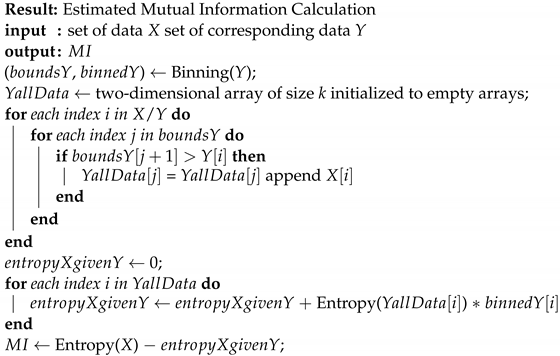 |
| Algorithm 3: Binning (Y) |
 |
4. Simulation Implementation
| Variable | Description | Initialization |
|---|---|---|
| Total A/B receptor count | 200 receptors | |
| A/B external concentrations at location | 0 | |
| A/B left/right bound receptor count | 0 | |
| Total number of receptors for a cell to allocate | 400 receptors | |
| Internal A and B molecule count | 0 | |
| i | Cell Location | [51, 1–100] |
| k | Absorption Coefficient | [1.0–5.0] |
| Dissociation Constant | ||
| S | Basal Energetic Requirement | |
| D | Division Threshold | |
| Total Simulation Time Steps | [30–100] | |
| Max Cell Velocity | 10 | |
| Max Cell Count | [2000, 10,000] | |
| Adjusted Cell Count | ||
| Cell Multiplier | 1 |
5. Numerical Results
6. Discussion
Measuring the Emergence of Subjective Information
7. Conclusions
Author Contributions
Funding
Data Availability Statement
Conflicts of Interest
References
- Farnsworth, K.D.; Nelson, J.; Gershenson, C. Living Is Information Processing: From Molecules to Global Systems. Acta Biotheor. 2013, 61, 203–222. [Google Scholar] [CrossRef] [PubMed]
- Smith, J.M. The Concept of Information in Biology. In The Scope of Logic, Methodology and Philosophy of Science: Volume Two of the 11th International Congress of Logic, Methodology and Philosophy of Science, Cracow, August 1999; Gärdenfors, P., Woleński, J., Kijania-Placek, K., Eds.; Springer: Dordrecht, The Netherlands, 2002; pp. 689–699. [Google Scholar]
- Adami, C. Information theory in molecular biology. Phys. Life Rev. 2004, 1, 3–22. [Google Scholar] [CrossRef] [Green Version]
- Shannon, C.E. A mathematical theory of communication. Bell Syst. Tech. J. 1948, 27, 379–423. [Google Scholar] [CrossRef] [Green Version]
- Cover, T.M. Elements of Information Theory; John Wiley & Sons: Hoboken, NJ, USA, 1999. [Google Scholar]
- Levchenko, A.; Nemenman, I. Cellular noise and information transmission. Curr. Opin. Biotechnol. 2014, 28, 156–164. [Google Scholar] [CrossRef] [Green Version]
- Vinga, S. Information theory applications for biological sequence analysis. Briefings Bioinform. 2013, 15, 376–389. [Google Scholar] [CrossRef] [PubMed] [Green Version]
- Suderman, R.; Bachman, J.A.; Smith, A.; Sorger, P.K.; Deeds, E.J. Fundamental trade-offs between information flow in single cells and cellular populations. Proc. Natl. Acad. Sci. USA 2017, 114, 5755–5760. [Google Scholar] [CrossRef] [PubMed] [Green Version]
- Sakkaff, Z.; Immaneni, A.; Pierobon, M. Estimating the Molecular Information Through Cell Signal Transduction Pathways. In Proceedings of the 2018 IEEE 19th International Workshop on Signal Processing Advances in Wireless Communications (SPAWC), Kalamata, Greece, 25–28 June 2018; pp. 1–5. [Google Scholar] [CrossRef]
- Harper, C.; Pierobon, M.; Magarini, M. Estimating Information Exchange Performance of Engineered Cell-to-cell Molecular Communications: A Computational Approach. In Proceedings of the IEEE INFOCOM 2018—IEEE Conference on Computer Communications, Honolulu, HI, USA, 16–19 April 2018; pp. 729–737. [Google Scholar] [CrossRef]
- Akyildiz, I.F.; Pierobon, M.; Balasubramaniam, S. An Information Theoretic Framework to Analyze Molecular Communication Systems Based on Statistical Mechanics. Proc. IEEE 2019, 107, 1230–1255. [Google Scholar] [CrossRef]
- Agarwala, E.K.; Chiel, H.J.; Thomas, P.J. Pursuit of food versus pursuit of information in a Markovian perception–action loop model of foraging. J. Theor. Biol. 2012, 304, 235–272. [Google Scholar] [CrossRef]
- Bergstrom, C.T.; Rosvall, M. The transmission sense of information. arXiv 2008, arXiv:0810.4168. [Google Scholar] [CrossRef] [Green Version]
- Tishby, N.; Polani, D. Information Theory of Decisions and Actions. In Perception-Action Cycle; Springer: New York, NY, USA, 2011. [Google Scholar] [CrossRef] [Green Version]
- Barker, T.; Thomas, P.J.; Pierobon, M. Subjective Information in Life Processes: A Computational Case Study. In Proceedings of the Eight Annual ACM International Conference on Nanoscale Computing and Communication, Virtual, 7–9 September 2021; Association for Computing Machinery: New York, NY, USA, 2021. NANOCOM ’21. [Google Scholar]
- Ortega, P.A.; Braun, D.A. Thermodynamics as a theory of decision-making with information-processing costs. Proc. R. Soc. A Math. Phys. Eng. Sci. 2013, 469, 20120683. [Google Scholar] [CrossRef]
- Donaldson-Matasci, M.C.; Bergstrom, C.T.; Lachmann, M. The fitness value of information. Oikos 2010, 119, 219–230. [Google Scholar] [CrossRef] [PubMed] [Green Version]
- Kelly, J., Jr. A new interpretation of the information rate. Bell Syst. Tech. J. 1956, 35, 917–926. [Google Scholar] [CrossRef]
- Mafessoni, F.; Lachmann, M.; Gokhale, C.S. On the fitness of informative cues in complex environments. J. Theor. Biol. 2021, 527, 110819. [Google Scholar] [CrossRef] [PubMed]
- Kolchinsky, A.; Wolpert, D.H. Semantic information, autonomous agency and non-equilibrium statistical physics. Interface Focus 2018, 8, 20180041. [Google Scholar] [CrossRef]
- Thomas, P.J.; Spencer, D.J.; Hampton, S.K.; Park, P.; Zurkus, J.P. The diffusion-limited biochemical signal-relay channel. In Advances in Neural Information Processing Systems; Citeseer: Princeton, NJ, USA, 2004; pp. 1263–1270. [Google Scholar]
- Thomas, P.J.; Eckford, A.W. Capacity of a simple intercellular signal transduction channel. IEEE Trans. Inf. Theory 2016, 62, 7358–7382. [Google Scholar] [CrossRef] [Green Version]
- Kimmel, J.M.; Salter, R.M.; Thomas, P.J. An information theoretic framework for eukaryotic gradient sensing. In Advances in Neural Information Processing Systems; Curran Associates: Red Hook, NY, USA, 2007; pp. 705–712. [Google Scholar]
- Rivoire, O.; Leibler, S. The value of information for populations in varying environments. J. Stat. Phys. 2011, 142, 1124–1166. [Google Scholar] [CrossRef] [Green Version]
- Vergassola, M.; Villermaux, E.; Shraiman, B.I. ‘Infotaxis’ as a strategy for searching without gradients. Nature 2007, 445, 406–409. [Google Scholar] [CrossRef]
- Lynch, M.; Marinov, G.K. The bioenergetic costs of a gene. Proc. Natl. Acad. Sci. USA 2015, 112, 15690–15695. [Google Scholar] [CrossRef] [Green Version]
- Ilker, E.; Hinczewski, M. Modeling the growth of organisms validates a general relation between metabolic costs and natural selection. Phys. Rev. Lett. 2019, 122, 238101. [Google Scholar] [CrossRef] [Green Version]
- Yang, N.; Hinner, M. Getting across the cell membrane: An overview for small molecules, peptides, and proteins. Methods Mol. Biol. 2015, 1266, 29–53. [Google Scholar] [CrossRef] [Green Version]
- Wesel, R.D.; Wesel, E.E.; Vandenberghe, L.; Komninakis, C.; Medard, M. Efficient binomial channel capacity computation with an application to molecular communication. In Proceedings of the 2018 Information Theory and Applications Workshop (ITA), San Diego, CA, USA, 11–16 February 2018; pp. 1–5. [Google Scholar]
- Thomas, P.J.; Eckford, A.W. Shannon capacity of signal transduction for multiple independent receptors. In Proceedings of the 2016 IEEE International Symposium on Information Theory (ISIT), Barcelona, Spain, 10–15 July 2016; pp. 1804–1808. [Google Scholar]
- Mardia, K.V.; Jupp, P.E. Directional Statistics; John Wiley & Sons: Hoboken, NJ, USA, 2009; Volume 494. [Google Scholar]
- Jammalamadaka, S.R.; SenGupta, A. Topics in Circular Statistics; World Scientific: Singapore, 2001. [Google Scholar]
- Snyder, R.; Ellner, S. Pluck or Luck: Does Trait Variation or Chance Drive Variation in Lifetime Reproductive Success? Am. Nat. 2018, 191, E90–E107. [Google Scholar] [CrossRef] [PubMed] [Green Version]
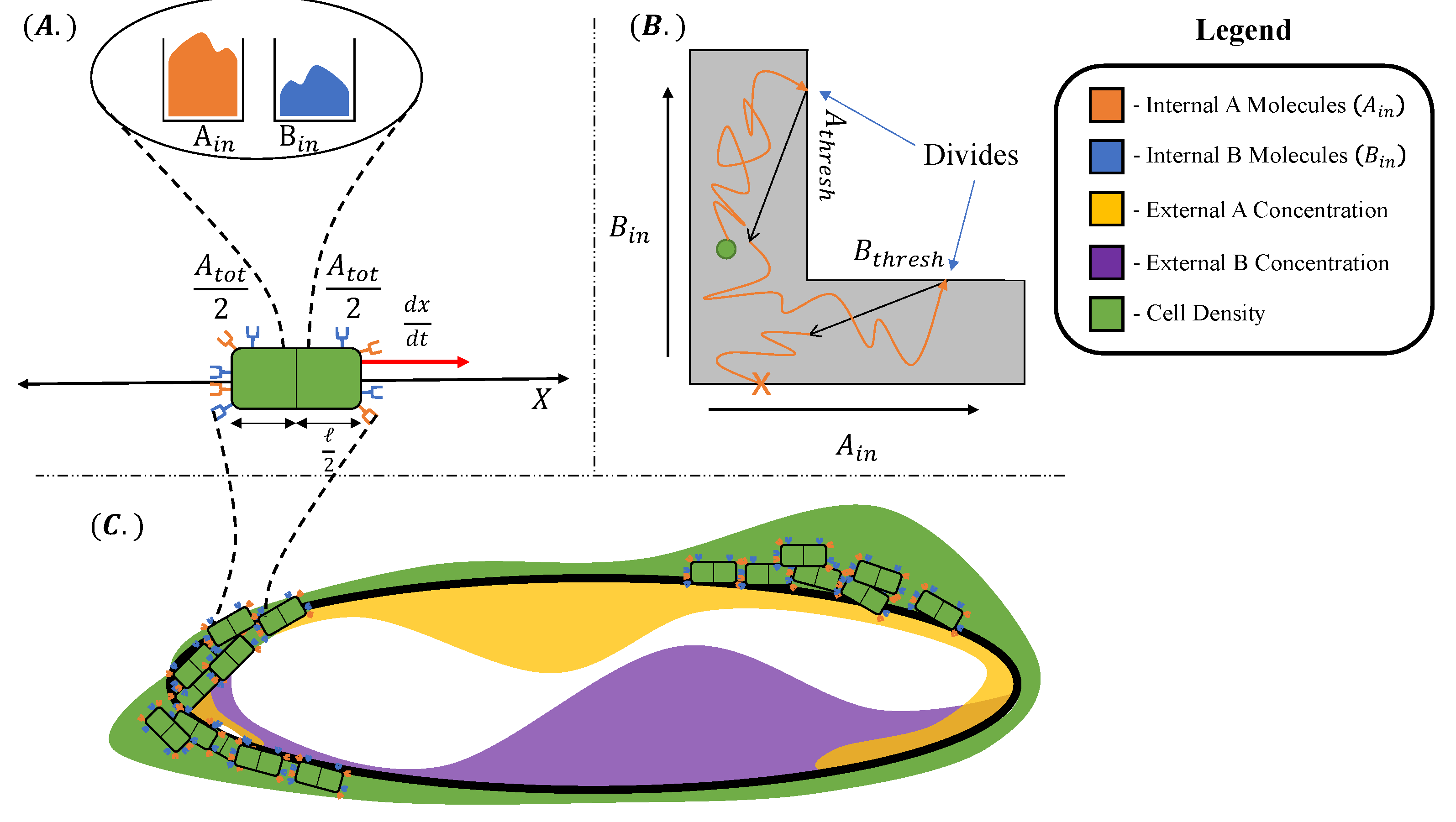

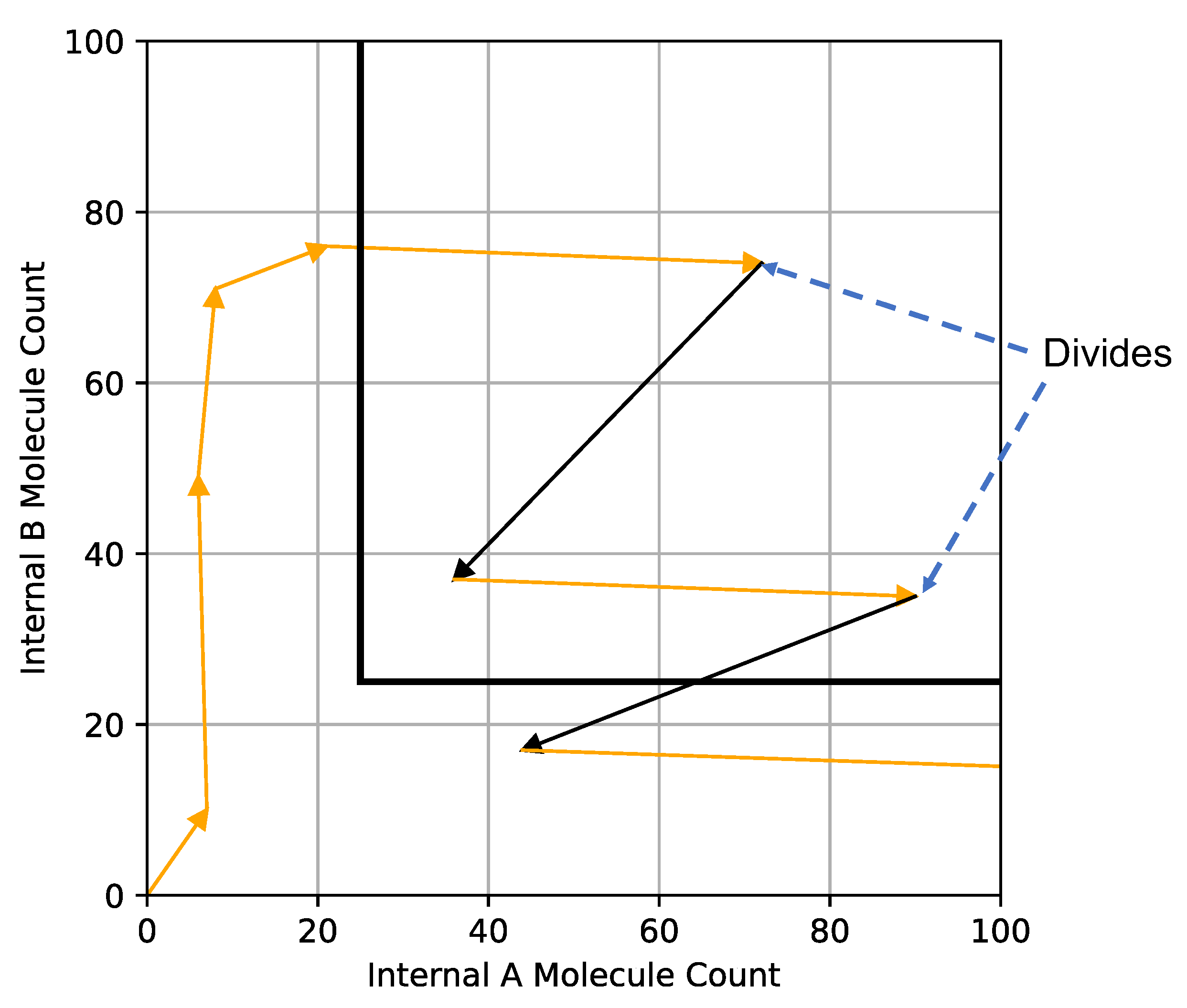
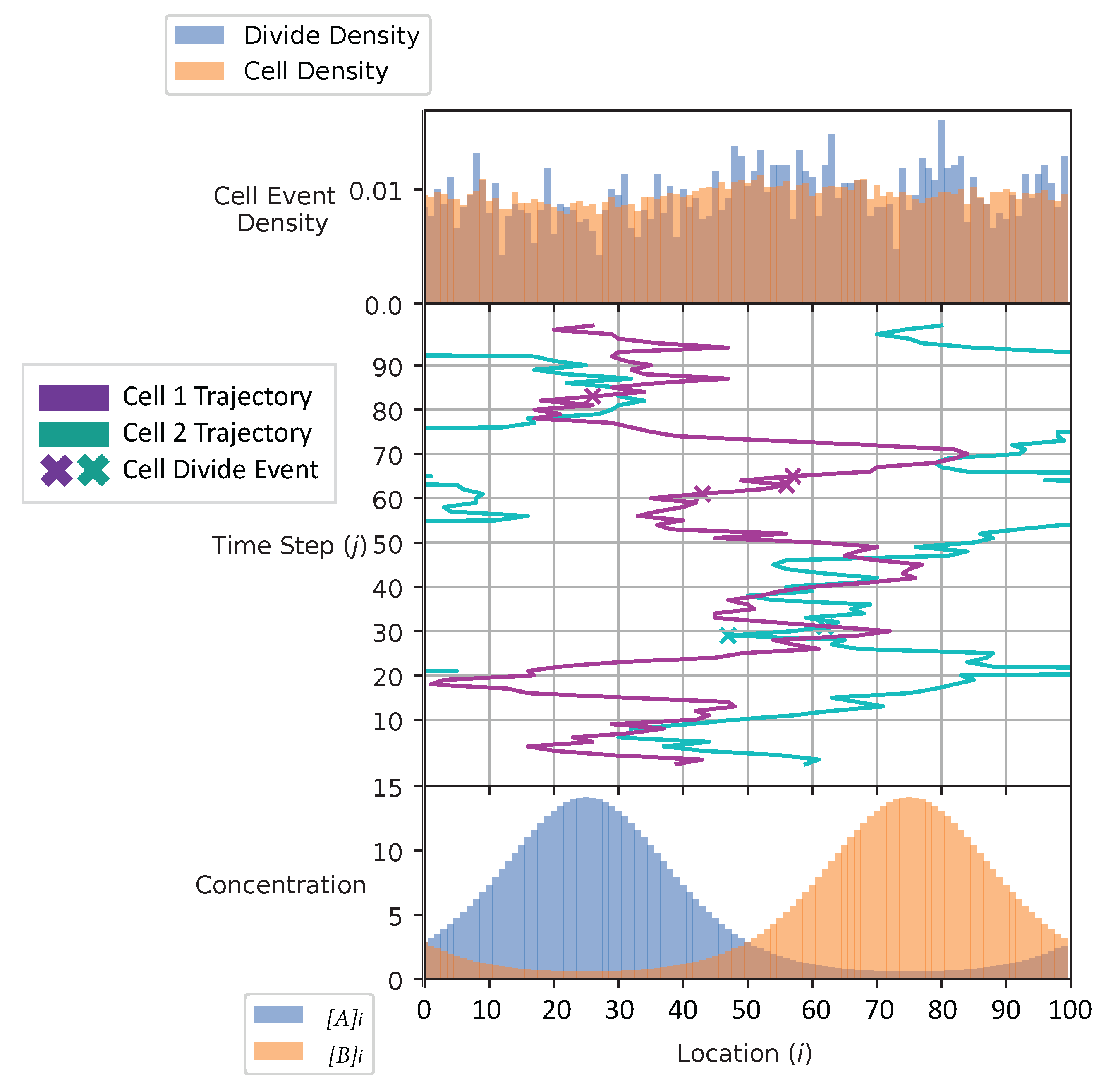
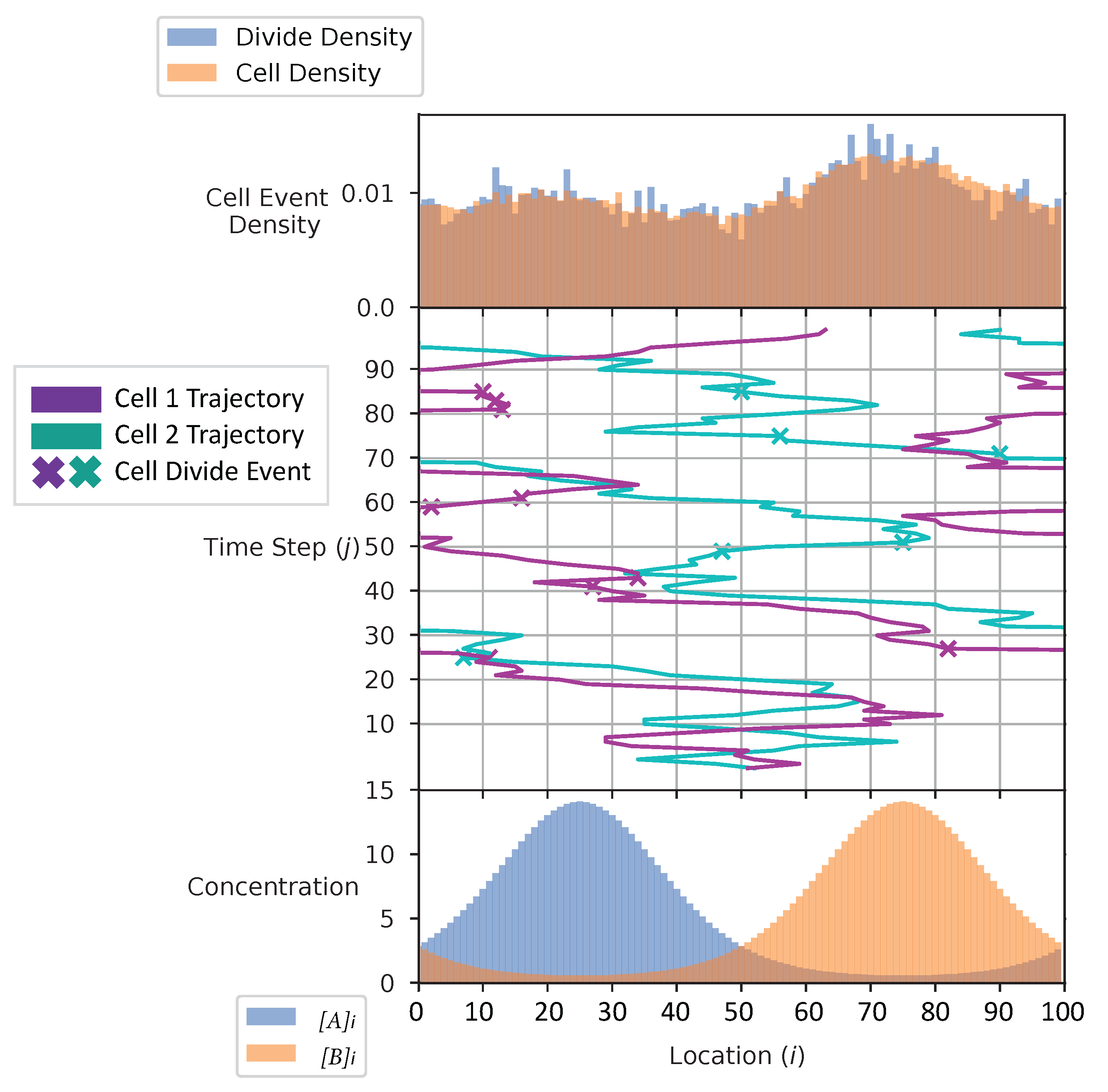
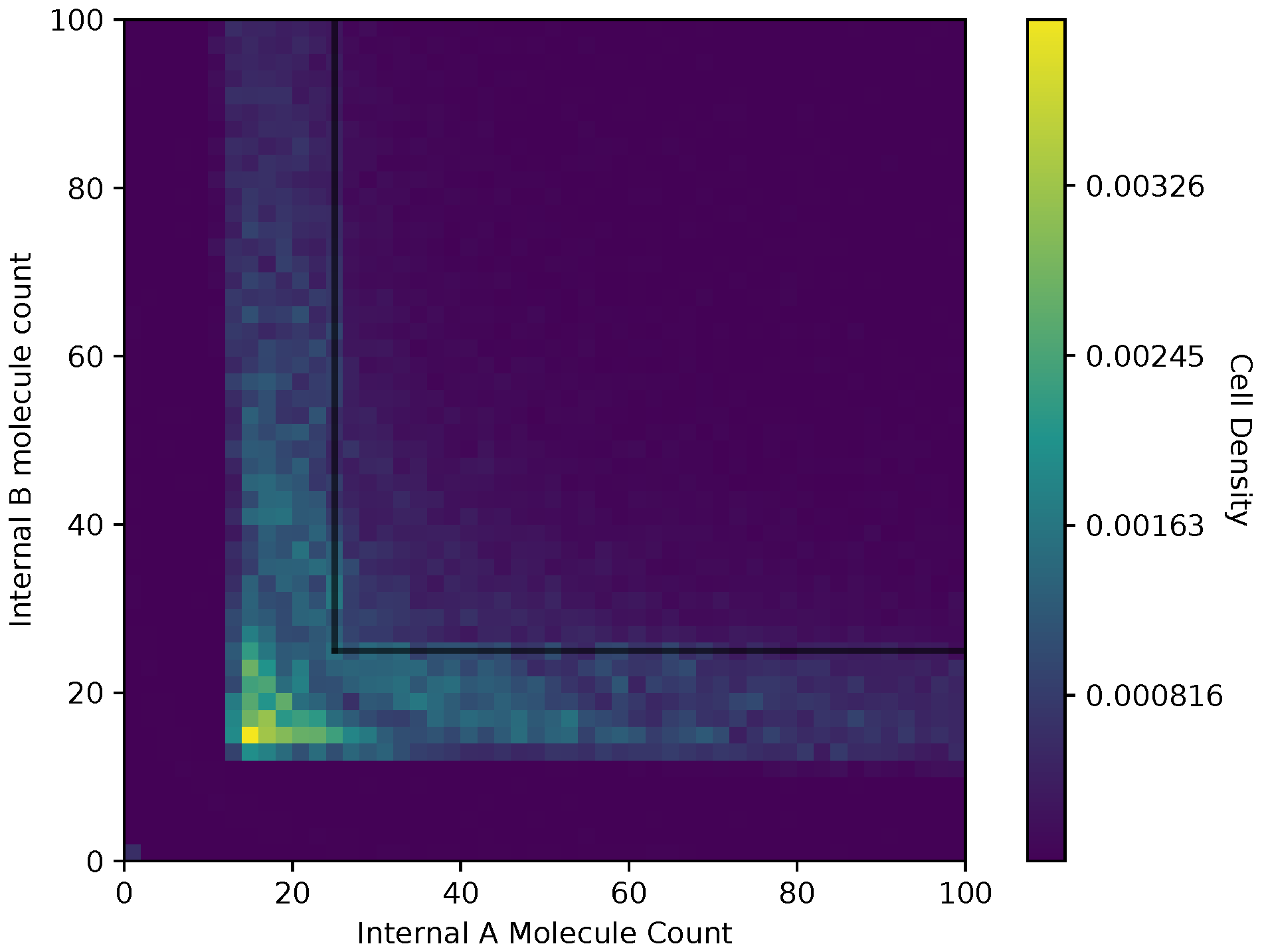
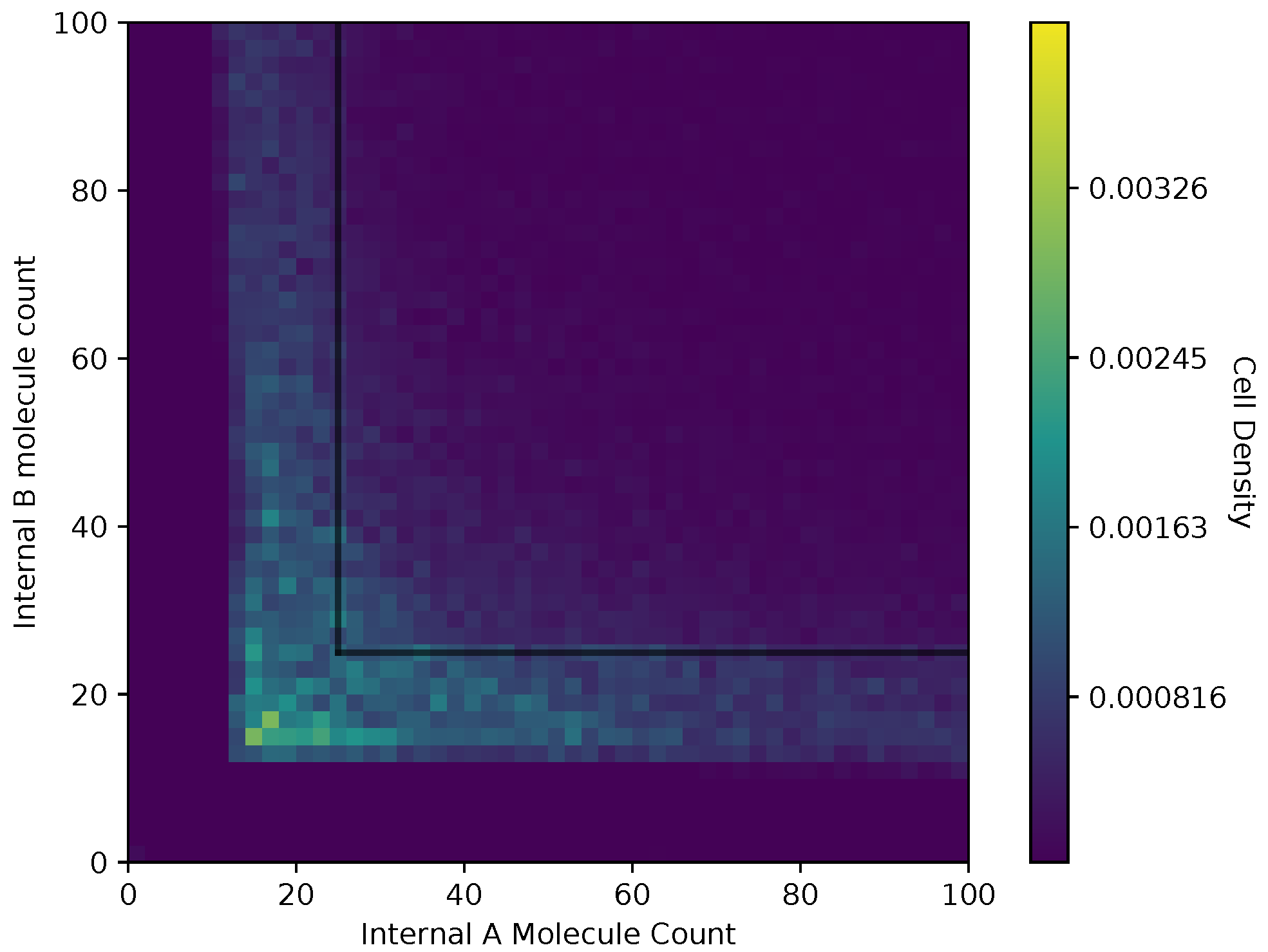

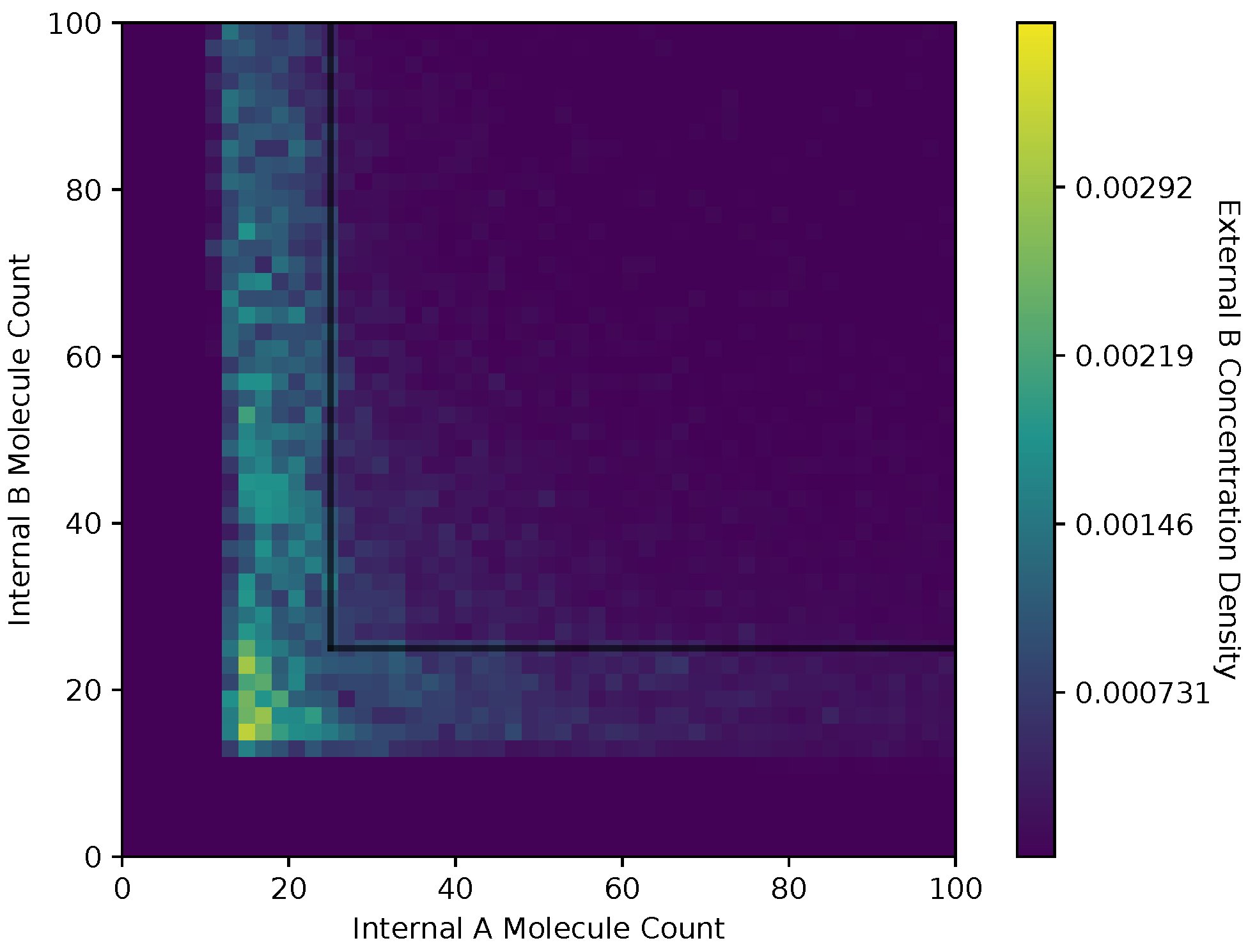
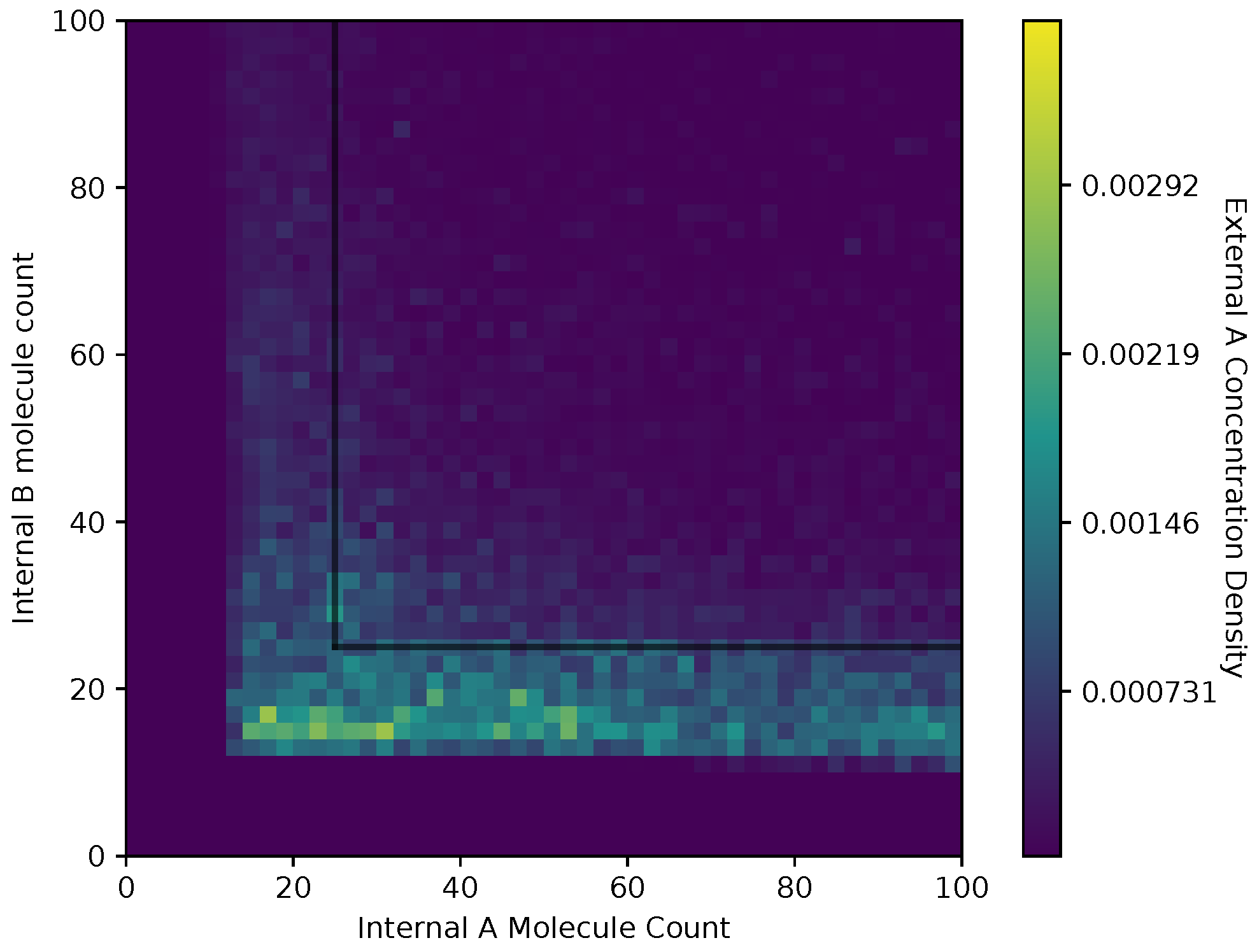
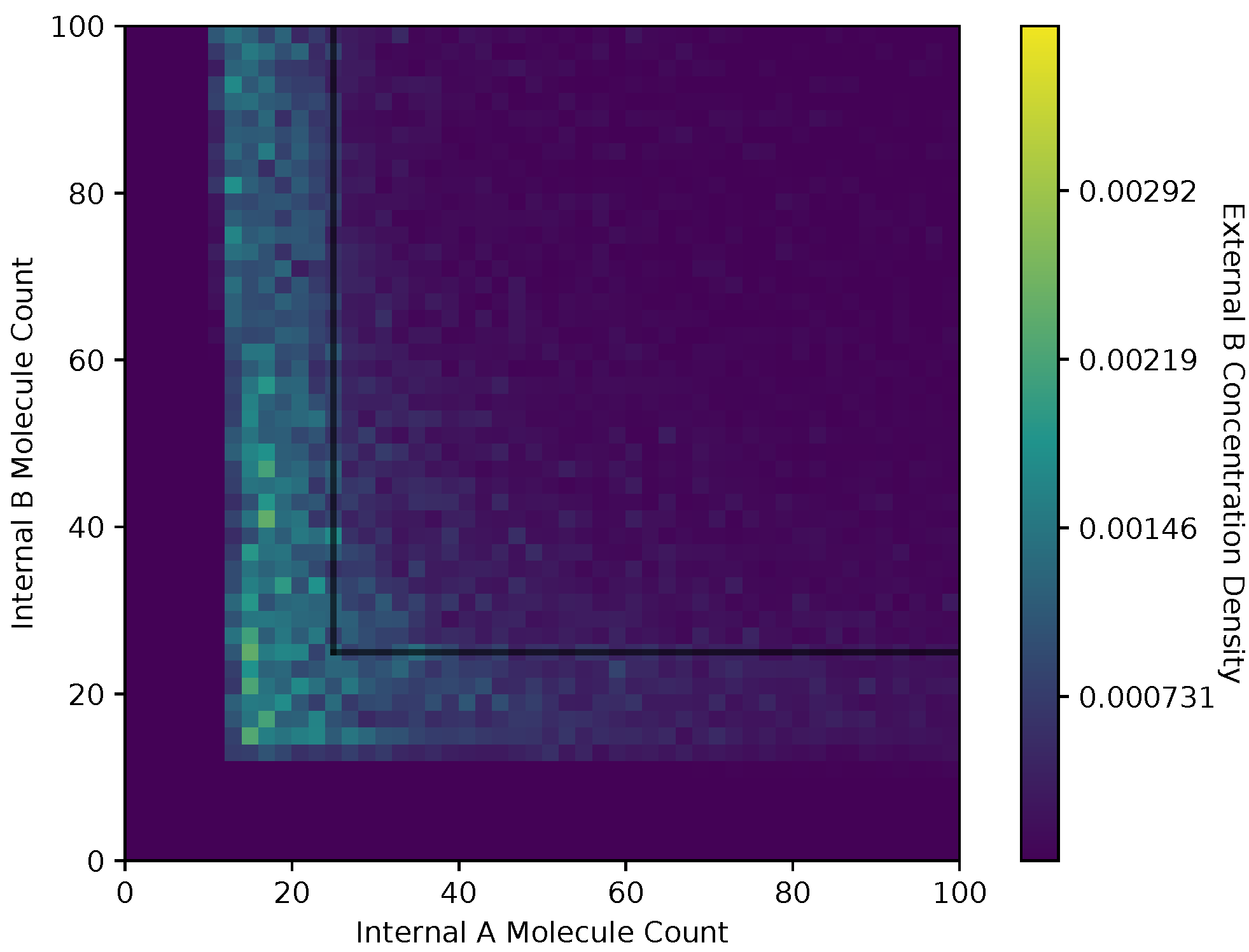
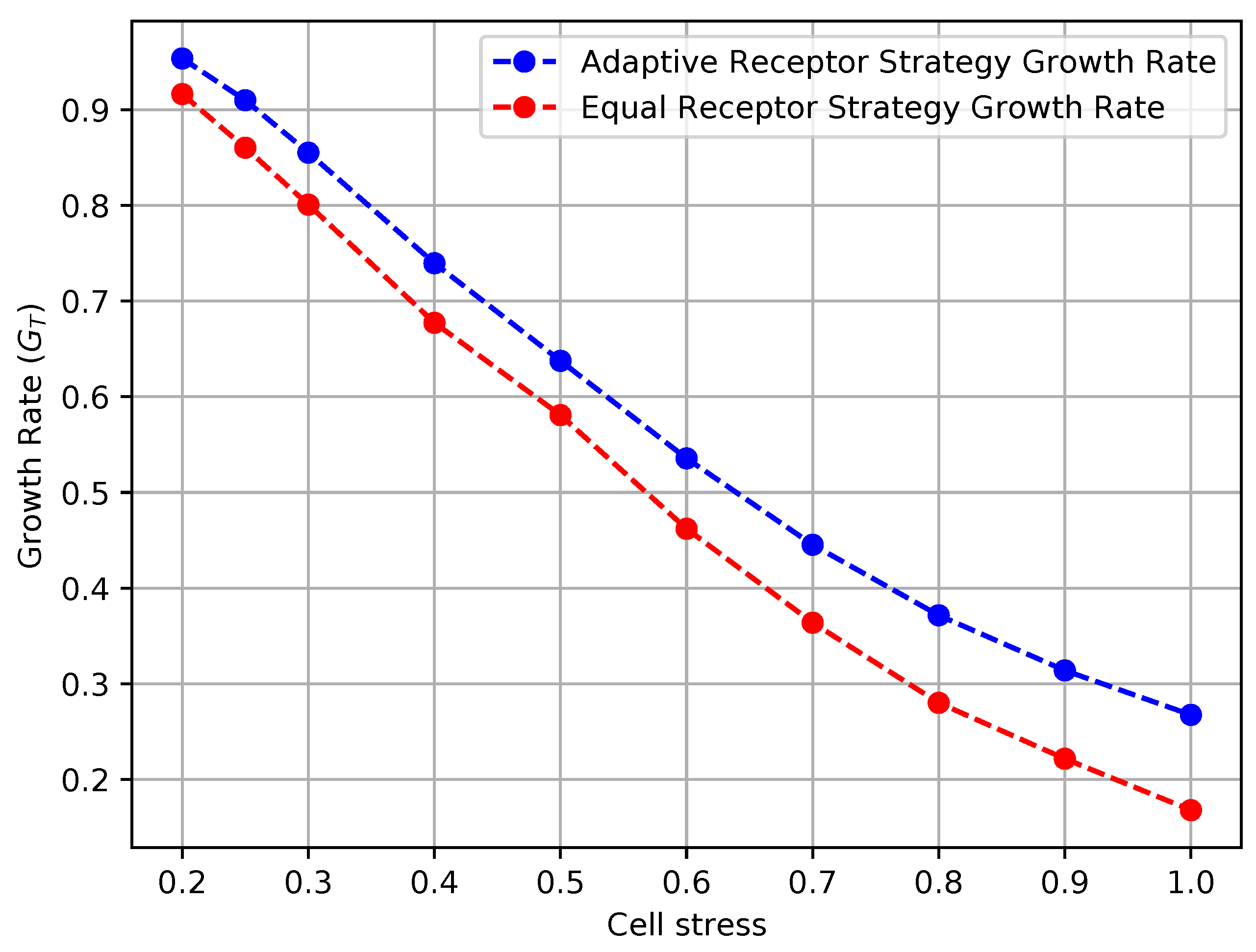
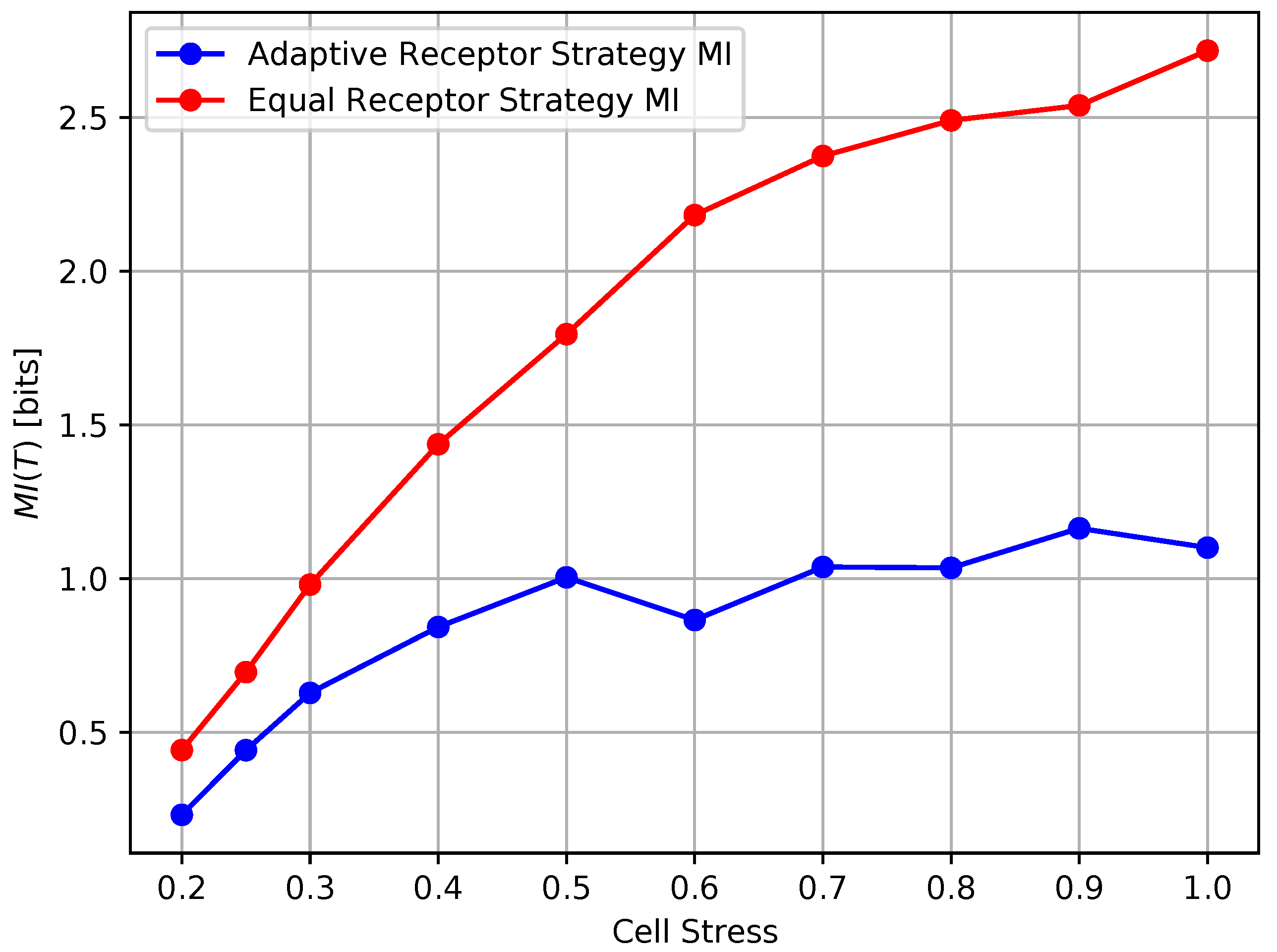





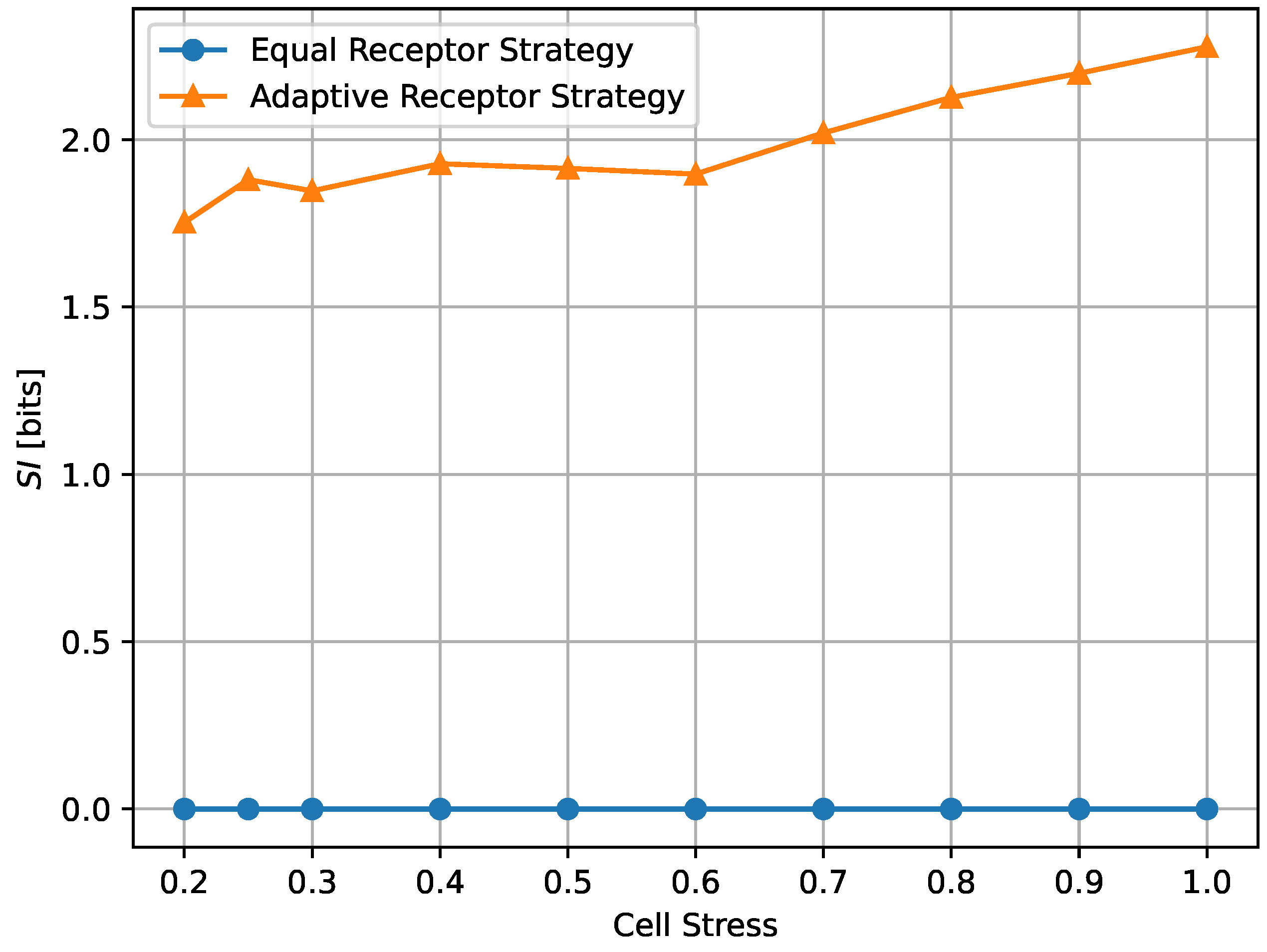
Publisher’s Note: MDPI stays neutral with regard to jurisdictional claims in published maps and institutional affiliations. |
© 2022 by the authors. Licensee MDPI, Basel, Switzerland. This article is an open access article distributed under the terms and conditions of the Creative Commons Attribution (CC BY) license (https://creativecommons.org/licenses/by/4.0/).
Share and Cite
Barker, T.S.; Pierobon, M.; Thomas, P.J. Subjective Information and Survival in a Simulated Biological System. Entropy 2022, 24, 639. https://doi.org/10.3390/e24050639
Barker TS, Pierobon M, Thomas PJ. Subjective Information and Survival in a Simulated Biological System. Entropy. 2022; 24(5):639. https://doi.org/10.3390/e24050639
Chicago/Turabian StyleBarker, Tyler S., Massimiliano Pierobon, and Peter J. Thomas. 2022. "Subjective Information and Survival in a Simulated Biological System" Entropy 24, no. 5: 639. https://doi.org/10.3390/e24050639
APA StyleBarker, T. S., Pierobon, M., & Thomas, P. J. (2022). Subjective Information and Survival in a Simulated Biological System. Entropy, 24(5), 639. https://doi.org/10.3390/e24050639






